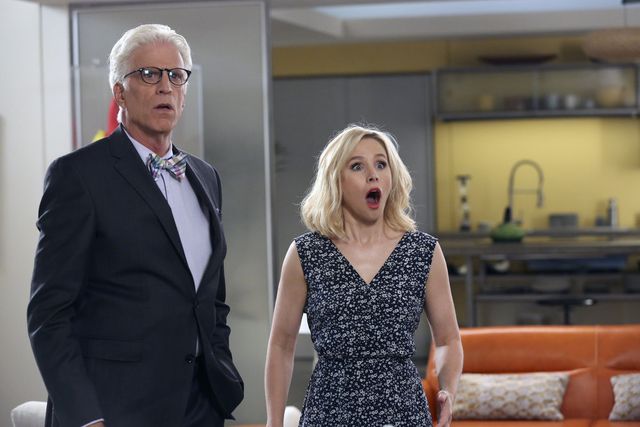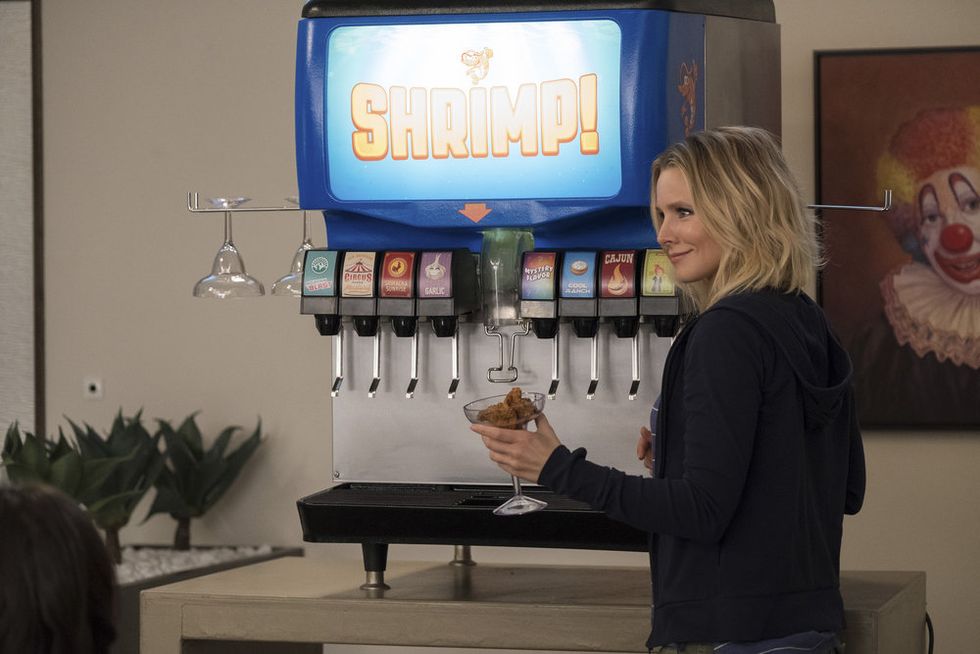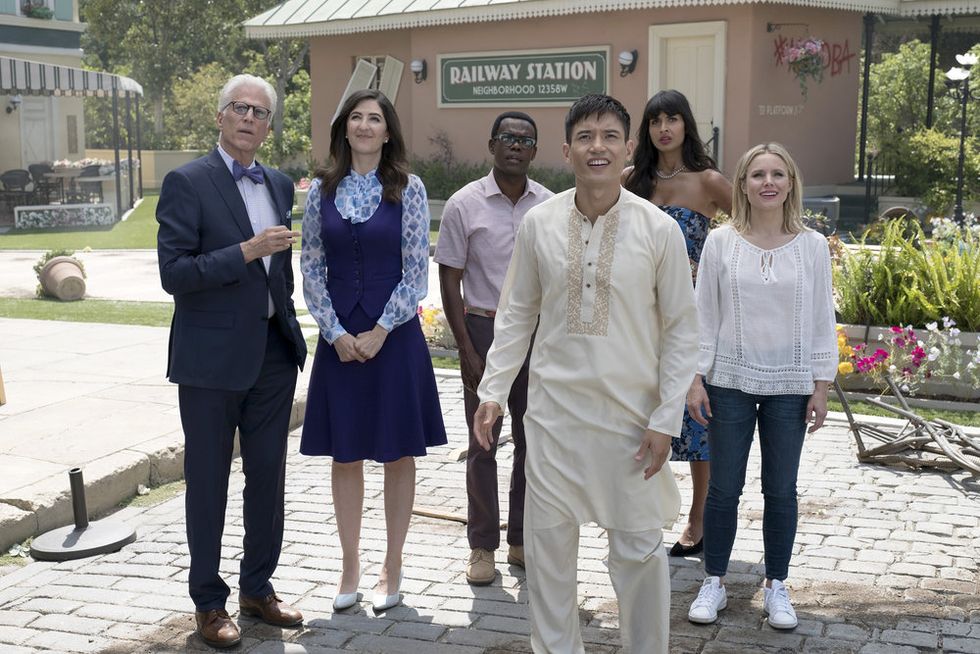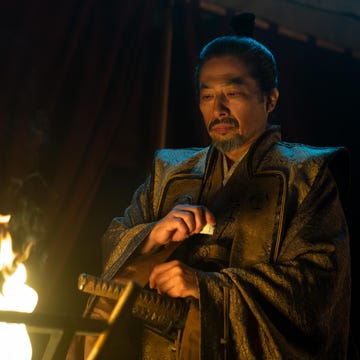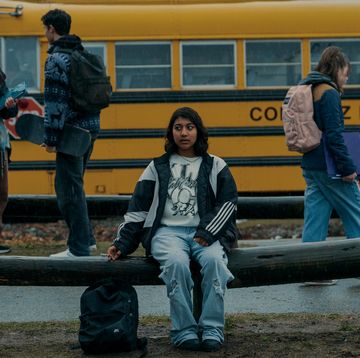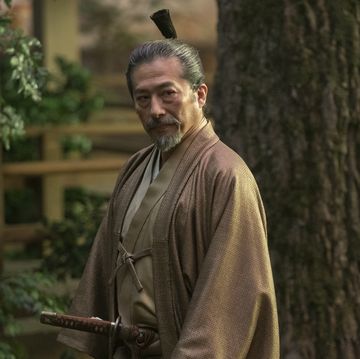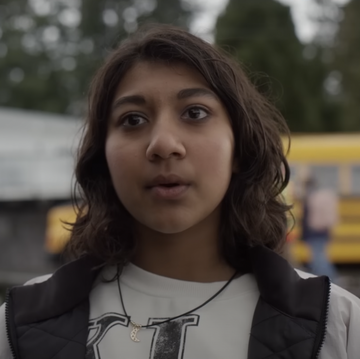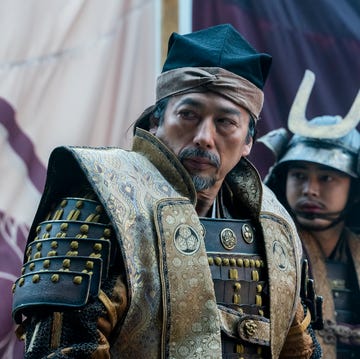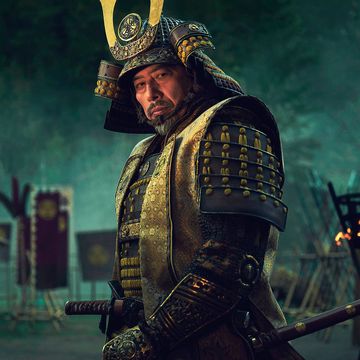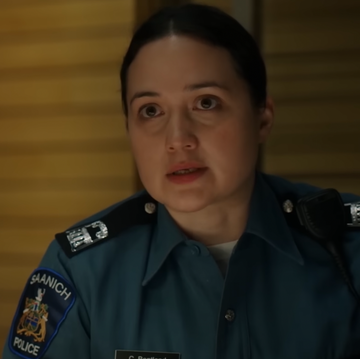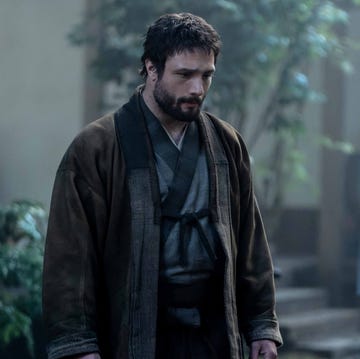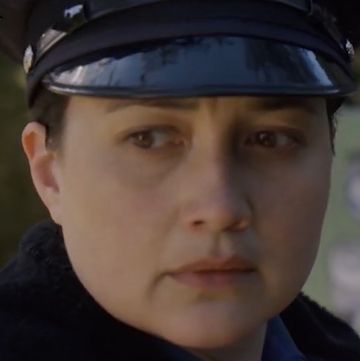[Warning: spoilers follow.]
In theory, The Good Place doesn’t have any stakes—almost all of the main characters are already dead. By the time the show starts, they’ve experienced their final reckoning and wound up in Heaven: the titular good place, in the shape of a Southern California neighborhood packed full of frozen yogurt shops with punny names run by Ted Danson. What could go wrong?
A lot, it turns out. If you haven’t seen the show, The Good Place kicks off with Eleanor Shellstrop, an Arizona dirtbag and shrimp obsessive played by Kristen Bell, dying only to slowly realize that there’s no way she could possibly have earned a spot in the good place. Eleanor’s confusing arrival catalyzes the formation of an odd band of lost souls, a goofy trip through the show’s version of the afterlife, and loads of conversations about what it means to be a good person long after any of the main characters have finished their run at being good people.
That it manages to pull off this bizarre premise is just one of the many great things about The Good Place, one of the best shows currently airing on television. In addition to Bell and Danson, the cast is rounded out by rising stars Manny Jacinto, Jameela Jamil, D’Arcy Carden, and William Jackson Harper, each of whom brings a specific comic energy to the ensemble, trapped together as they are by the afterlife. The characters’ conversations about ethics are not only intellectually coherent, they’re engaging too; this is the only show on TV that could include jokes about the finer points of Kant’s maxim against lying, the trolley problem, or Kierkegaard’s Fear and Trembling. And as the show has gone on, The Good Place has twisted and turned to become something much darker and weirder than anyone could have originally expected. (Not for nothing does Good Place creator Michael Shur frequently compare it to Lost.)
But one of the best things about The Good Place is the way it fully pays off years of promise from single-camera sitcoms, blowing up the format again and again to deliver an ongoing, compelling story.
For those who don’t spend all their time thinking about the specific distinctions of how different types of TV shows are made: multi-cam sitcoms are filmed with multiple cameras, often in front of a live studio audience, which gives them the look and feel of live theater. They’re what we think of as more traditional, classic sitcoms—Cheers, Seinfeld, All in the Family. Single-cam shows, on the other hand, look and feel more like a movie, with jokes told through editing, stylized visuals, and an overall lower bar for intense acting, like 30 Rock, New Girl, and Good Place creator Michael Shur’s past gig, Parks & Recreation.
Within circles of people who talked a lot about TV, it used to be common sense that single-cam shows were the future, that obviously audiences couldn’t stomach the slower, consciously low-tech feel of multi-camera shows. But the straightforward, single-cam sitcom has largely given way critically to dramedies that don’t really fit into the sitcom form at all. The Big Bang Theory, the most popular sitcom on TV at the moment, is a multi-cam show. It’s pointless to compare which format is “better;” like any two distinct, but related genres, they have different structures that give rise to distinct strengths and weaknesses. But it is fair to say that The Good Place fully utilizes the single-cam format in a way few sitcoms have done to date.
Partly, this is a function of The Good Place taking full advantage of its fantastic setting. There have been other attempts at genre-bound sitcoms in recent years (like the short-lived, half-animated show Son of Zorn, or the time-travel comedy Making History), but The Good Place is judicious with its flying shrimp, rampaging giraffes, and the occasional literal flight of fancy. If there’s a prop the writers can dream up the show creates it, usually using the neighborhood’s omnipotent software assistant, Janet (D’Arcy Carden).
The prospect of eternity stretching out, with nothing to do but trying different goofy things to pass the time, is theoretically perfect for a sitcom. Want to give the characters a chance to talk to historical figures? Try cooking the universe’s biggest hot dog? Or live out every weird fantasy they had on Earth? The Good Place leaves all of those open as possible plots—but instead, it dives deeper into its ongoing plot and harder, smaller-scale questions about ethics, allowing small, substantial changes to its world to bring everything along. (For example: The sole resident of the medium place is an ’80s businesswoman who is generally kind-hearted but also distractingly horny and desperate for cocaine.) And by keeping its focus on questions like “Is it okay to lie sometimes?” and “Are we obligated to help others even when it hurts us?” a show set in the afterlife feels deeply down to earth.
Still, the drawback is that there are relatively few circumstances to add new people to the cast, other than by, uh, having a bunch of new dead people show up. Instead, The Good Place sets up the potential for even more exciting sitcom plotting with its big, season one twist: the characters actually in the bad place, and Ted Danson’s celestial architect Michael has the ability to repeatedly wipe their memories and turn them loose under new circumstances. In these moments, The Good Place has the makings of an extended interrogation of sitcom form itself—placing somewhat defined characters into a series of ridiculous situations and letting them ping-pong through jokes, testing what makes them them in a way that feels inorganic and hollow on, say, How I Met Your Mother.
But The Good Place gave that up in two episodes; now its characters are on a crash course for literal Hell, in a breakneck bit of plotting that makes it hard to imagine where the show is going. It’s the sort of question you’d normally ask about something like Breaking Bad, but a sitcom? The constant replication has allowed the characters to observe recordings of and consider past versions of themselves, and to make conscious decisions about what they want within a dizzying array of options. A recent episode asks the characters to be the best possible versions of themselves, which is to say, ones that have made progress on their character arcs.
Is any of this sustainable? The best sitcoms—not the most popular ones—feel like high-wire balancing acts. How long could Larry David write a show about nothing, and how long could Jason Alexander and Julia Louis-Dreyfus make it compelling? How long could How I Met Your Mother keep its gimmick sweet and romantic, rather than sour and embarrassing? The Good Place is simply in the unique situation of having this process be made explicit as part of the show’s plot, rather in the chemistry between the actors or the feeling that the writers’ room was hard up for ideas. The whole thing might fall apart at some point, but The Good Place will be thrilling and hilarious right up until the very minute everything goes to Hell.
